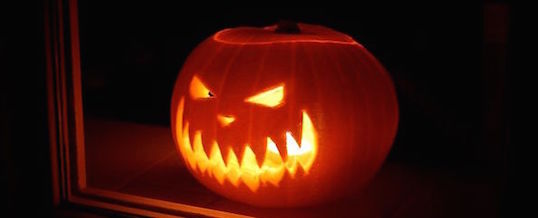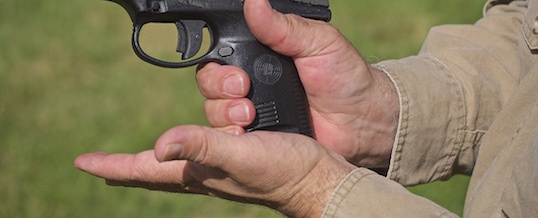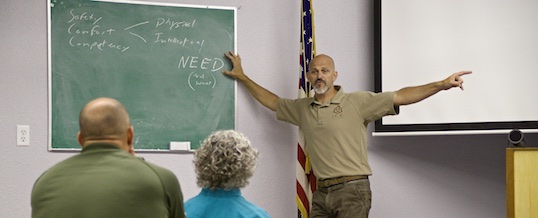
Halloween Safety Tips: how to keep your kids happy and healthy at the same time!
Halloween is upon us again! This is the time of year when the weather here in Oregon turns cold and rainy, but despite that kids still get out and trick-or-treat while their parents (or older siblings) go to festive Halloween parties. Everyone faces higher risks simply due to the activity level, but there are ways to reduce those risks. Today I’m sharing some Halloween safety tips to make the holiday enjoyable for everyone!
Let’s tackle a non-issue first: tainted Halloween candy. When I was a kid in the late ‘60s and ‘70s, it was common knowledge that kids got poisoned every year due to LSD-laced trick-or-treat candy. Of course back then we didn’t have the internet and couldn’t research these things, and the rumors spread far and wide. I lived in a small rural community, far from the drug-addled subculture of the big city, but even in our town there were persistent rumors of “some kid” getting unintentionally high from candy obtained at an unknown house — of course, our parents “just knew” which house that was even if they couldn’t actually identify the kid involved.
Fast-forward to today, and technology gives us the tools to research these stories. Turns out that the vast majority of them aren’t true, which comes as no surprise, and those few that turned out to be true usually involved a family member doing something nefarious. It would seem you have more to fear from your family than from your neighbors!
Of course you should always have a look at your kid’s candy just to weed out anything really suspicious, but you don’t need to get paranoid. (My Dad’s excuse for going through our haul was always protecting us from the evil LSD-laced candy. For some reason the Baby Ruth bars were consistently the ones he deemed to have been tampered with. How do I know this? Because he always confiscated those and taste-tested each one to make sure we were safe. What a guy!)
In reality, the major threats your children will face this year are the same risks they face every year: choking, costume-related hazards, and pedestrian accidents.
I don’t know about you, but when I got a bag of candy as a kid I just had to eat all of it right away. (Of course I had to — once Dad was finished with the Baby Ruth bars he’d start “taste-testing” everything else!) This binging behavior is a contributor to choking incidents; it’s best to not let your kids gulp their treats down and make sure that what they’re eating is appropriate for their age. Watch that they’re properly chewing and that they’re not trying to shove too much in their mouth at one time. It seems silly to need to say that, but every year children die from choking on Halloween candy. Apparently common sense truly is not all that common.
I don’t know how well this next tip works, but some parents tell me they portion out their children’s treats over several weeks to force them to slow down and enjoy each morsel. Looking back on my own childhood I’m not sure that would have gone over terribly well, but you’re welcome to try it at your house!
Remember that prevention is always important, but learning to respond is equally as important. You should be prepared for a choking accident by watching a quick online refresher for the Heimlich Maneuver as applied to children, and it might be a good idea to teach your own children how to do the Heimlich as well. They may be the only ones present when their friends choke on their candy.
Halloween costumes are always a source of danger, and a little attention to putting together a safe costume may save your child from a trip to the emergency room. First, any costume they wear should be fire retardant. Most commercially made costumes print that information boldly on the packaging; look for it. With candles still common in jack-o’-lanterns, the chances of your child brushing up against one and catching their ghost outfit on fire are still high. Retardant clothing goes a long way to eliminating burn injuries.
Costumes should also be evaluated for their tripping hazard. Long costumes that get under feet, especially when descending steps, are a big cause of fall injuries. Yes, your kids look cute in that too-big costume, but if it extends below their ankles there is an increased risk of tripping. Size those costumes correctly!
Make sure that they also wear good, properly fitting walking or athletic shoes with their costumes. You may have to fight with your little girl over the high heels she desperately wants to wear with her princess outfit, but they dramatically increase her risk of falling.
Masks need to allow for good vision. Too many obscure the wearer’s view, making it difficult to spot hazards (or even descend those steps I mentioned earlier.) Make sure that your kids can see well out of their masks and if necessary enlarge the eye holes to make sure they can. A better choice, and becoming far more common, is to use makeup instead of a mask. They’ll be able to see better and breathe easier, even if it is a little more work to get them ready.
Finally, the costume should be visible to drivers. Yes, I get that it’s Halloween and black is the traditional color, but black clothes at night are a recipe for pedestrian accidents. If the costume your child desperately wants isn’t terribly visible, consider picking up a reflective jogger’s belt for them to wear as a sash — even better are the models with blinking LED lights. You can do the same thing with their treat bags and some reflective tape, and having them carry a flashlight is also helpful. Do anything you can to increase their visibility in traffic to prevent the car-pedestrian accidents that are the most common cause of Halloween fatalities.
You should always accompany your children, especially if they’re under about 12 years old, and keep them within a few feet at all times. Encourage them to walk, not run, and especially watch out for them running out from between parked cars. Running across lawns, where decorations or just normal trip hazards may not be easily seen, is another risk; make sure they stay on the sidewalks whenever possible. Of course it should go without saying that everyone should always use crosswalks and obey traffic signals!
While driving between trick-or-treat stops, make sure the kids use their seatbelts. It’s tempting to relax this rule because it seems as though you’re going so slowly, but don’t; when the car is moving, their belts should be fastened. Yes, even if it does wrinkle their costume!
According to the AAA, fatal automobile injuries jump an astounding 50% when Halloween falls on a Thursday, Friday, or Saturday — as it does this year. Your responsibility as a driver increases significantly on Halloween and you need to take precautions to make sure that you’re not the cause of an accident.
The first thing you can do is to make sure that you’re a sober driver; adult Halloween parties are usually held on Saturdays, which is the same night the kids will be out trick-or-treating this year. If you’re going to drink, don’t drive. Have a designated driver ferry you between your own trick-or-treat stops, but don’t get behind the wheel if you’ve imbibed. If you see someone who shouldn’t be behind the wheel, offer to drive them home or call them a cab; the child you save may be your own.
If you’re driving where trick-or-treaters are present, slow down. I realize a lot of residential areas are posted at 30 or even 35 mph, and I see a lot of cars driving at that speed regardless of how many people are out, but on Halloween every residential area should be treated like a school zone: 20 mph, slower if there are a lot of pedestrians.
Stay alert; other parents may not have thoughtfully ensured that their kids’ costumes are highly visible and you’ll need to keep a constant watch for kids running in front of cars. It happens, so expect it!
Don’t use your cellphone while you’re moving, not even to check your map. If the car is in motion the phone (or tablet or GPS) should be off. Don’t allow anything to distract you from watching out for children, and I’d even recommend keeping the radio off; it’s one more thing the brain has to process and may take valuable attention from your all-important visual inputs.
Halloween is, sadly, a time when a lot of kids get injured and too many killed. With some thought, preparation, and discipline that doesn’t have to be your kid in the emergency room — nor your fault that someone else’s is. Think SAFETY this Halloween!
(Oh, don’t forget to make them brush and floss after eating all of that sugar!)
– Grant Cunningham
- Posted by Grant Cunningham
- On October 30, 2015



